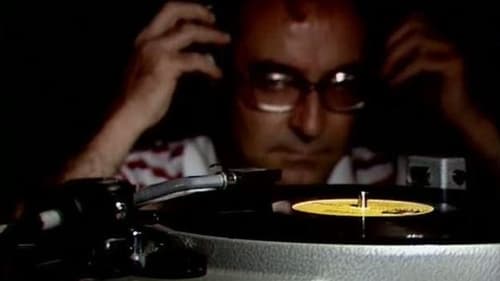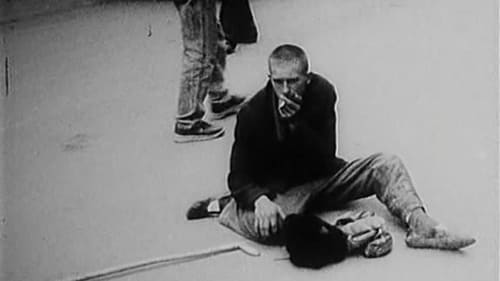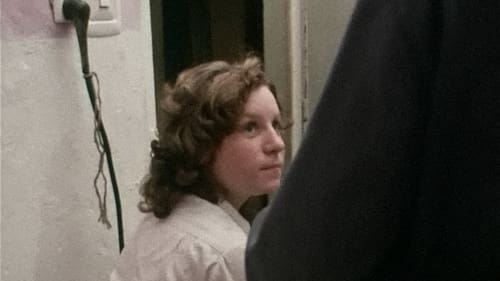Break Up (1948)
Género : Documental
Tiempo de ejecución : 9M
Director : Arne Sucksdorff
Sinopsis
A short about Romanis in Sweden breaking up camp and moving on.

This short film is Godard’s message to the people of Lausanne, specifically journalist and critic Freddy Buache, addressing his reasons why he will not make a film about their town’s 500th anniversary. Rather than cynical or defensive, Godard's bemused narration of the footage of Lausanne is imaginative and even playful, a rumination on cinema's possibilities.

In 54 static shots, Benning provides a picture of the Natural History Museum in Vienna. With the exception of the first three shots, he chooses areas that are normally closed to the public: offices, store rooms and empty corridors. A characteristically meditative Benning, even though this time he chooses to stay indoors.

Ingmar Bergman speaks with Gunnar Bergdahl.

A slow-motion study by Norman McLaren of the pas-de-deux adagio, one of the most exacting and difficult dances of classical ballet. A ballet originally choreographed by the Russian ballet master Asaf Messerer is performed for this film by the internationally known Canadian pair, David and Anna Marie Holmes, to the music of Albinoni’s Adagio. A film to heighten the aesthetic appreciation of classical ballet and to afford observation of the technique and mechanics of the adagio movements.

A color cocktail by Norman McLaren and Evelyn Lambart, translating into moving patterns of color and light the moods of music written for a jazz ensemble by Eldon Rathburn. Inscribed and colored directly on film.

In 1967, Cuban documentary filmmaker Octavio Cortazar followed a projectionist whose mission was to show moving pictures to rural communities for the first time. Cortazar’s short film documents one audience’s response to its first film: Charlie Chaplin’s Modern Times.

Animated photographs (made with Jan Lenica) with elements of animated cartoon. A display of military drill.

Rythmetic is a 1956 Canadian short animated film directed by Norman McLaren and Evelyn Lambart where numbers are the main characters.

Lírica balada sobre el mundo del circo y los artistas itinerantes.

A portrait of people who live on the margins of life and exist outside normal society.

Norman McLaren attempts to give the opening speech for the first Montreal International Film Festival, but his microphone won't cooperate.

This remarkable companion piece to In the City of Sylvia offers a compendium of images recorded by Guerín in Strasbourg while searching for the traces of a (fictional?) brief encounter some years earlier with a young woman named Sylvia.

One day, Saturday October 5th, in a mans life.

Breve historia del "juego" preferido del ser humano.

After the doctor's refusal to perform abortion on a 17-year old girl, she and her boyfriend have to cope with the new situation. They both need to learn to take responsibility for their decisions, in spite of numerous hardships facing them.

Roy Andersson's short movies focus on working class and youth daily life, capturing and portraying a small slice of his characters' day.

Colourful orphanage life.

Animation featuring dancing black and white shadows.

The title of this twenty-minute video by Jean-Luc Godard and Anne-Marie Miéville, “Freedom and Fatherland,” is the official slogan of the Canton de Vaud, in Switzerland, where the filmmakers live and grew up. To fulfill their commission from a Swiss cultural festival, they adapted a great Swiss novel, “Aimé Pache, Painter from the Vaud,” by Charles Ferdinand Ramuz, from 1911 (about a local artist who goes to Paris for his education and then returns home) and extruded its autobiographical analogies to Godard’s own life and work. Using a choice set of clips from Godard’s films to coincide with events from the painter’s life, verbal references to modern times and to Godard’s own—Sartre, the late nineteen-sixties, the cinema—and images of the Swiss terrain, which plays a decisive role in the work of Pache, Godard, and Miéville (an important filmmaker in her own right), they produce the effect of mirrors within mirrors.

The first Wojciech J. Has (Saragossa manuscript) short film. Very simple and touching story about a boy who dreams about buying an accordion.











